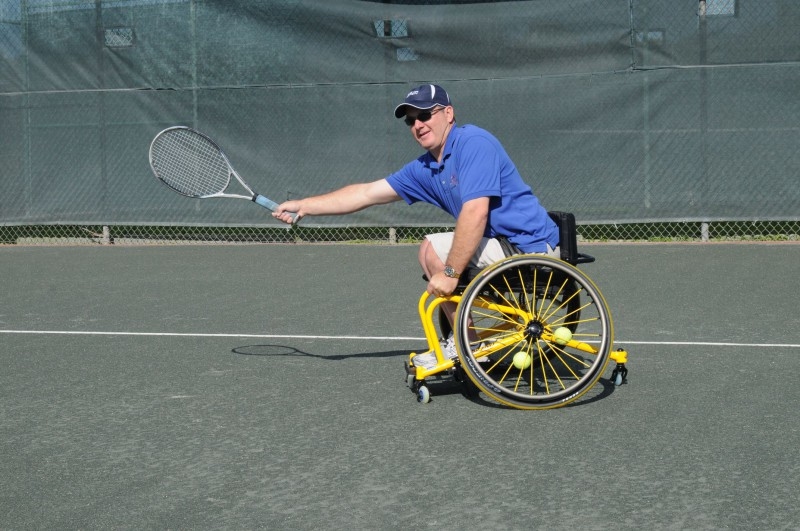With equipment and support now widely available, there is no reason that disabled people should be unable to participate in exercise.
And with increasing numbers of sports clubs and societies starting up for disabled people, there are more options than ever.
As well as specialist clubs and groups to play sports with, access to specialist equipment makes a big difference when it comes to disabled people’s ability to participate in sporting activities. While a standard wheelchair will often do the job, disabled exercise equipment can help an athlete with their speed, their agility and their ability to move across a court or field unhindered. And while many disabled people could go to a regular gym, many are surprised to find that there are pieces of exercise equipment designed especially for those with mobility or other difficulties.
Let’s take a look at some of the equipment that’s available:
Disabled exercise equipment
The best disabled exercise equipment will vary from sport to sport. The best wheelchair for racing may not be the best for wheelchair basketball, for instance, and something that would help one person cycle would not suit somebody else. Teams and clubs involved in disability sport, as well as specialist websites and equipment dealers, are in a good position to offer advice, but we are going to make a start by offering you some useful information right here.
Sports wheelchairs
Sports wheelchairs are designed for speed and dexterity, coming in different designs based on the sport that is being played or the race someone is participating in. Racing wheelchairs often have a long rod with a single wheel at the front, while chairs for basketball or rugby are more compact and designed to be able to change direction quickly, as well as move at pace.
Pedal exercisers
Pedal exercisers allow people who are disabled to take exercise while remaining stationary. They can be operated with the feet, and some designs and models can be operated by the hands, if upper body exercise is preferred. Replicating the action of pedalling on a bicycle, a pedal exerciser can be great for aerobic exercise as well as muscle strengthening and stamina building.
Most pedal exercisers have a way of displaying the distance ‘travelled’, calories burned and time spent pedalling.
Exercise balance beams
If a disabled person wants to improve their balance and co-ordination, an exercise balance beam can be used within the home or at the gym. With muscle strengthening power and the possibility of improving somebody’s balance, the exercise balance beam lays along the floor. Its design offers a safe challenge to its users, standing only a few inches from the floor so falls are unlikely. These beams are comfortable and easy to use, structured out of soft material to reduce the risk of injuries further.
Exercise balance pads are also available, which instead of having a long, thin beam construction, are similar in design to a cushion, offering the user a square of material to stand on and carry out their physio or exercises.
Shoulder pulleys
Shoulder pulleys are designed to be used over a door or as a standalone unit. They can offer a real boost to upper body strength and help to improve the range of motion of the arms and shoulders. Over-door designs can be used with one or both hands, and weights can be added if the user wants an extra challenge to their workout.
Whatever exercise you choose to pursue, you deserve the technology and adaptations to be able to fully partake in it. There are an increasing number of aids available, so don’t be put off by thinking that the sport of your choice will be inaccessible to you. Look for local groups, and make a start!
